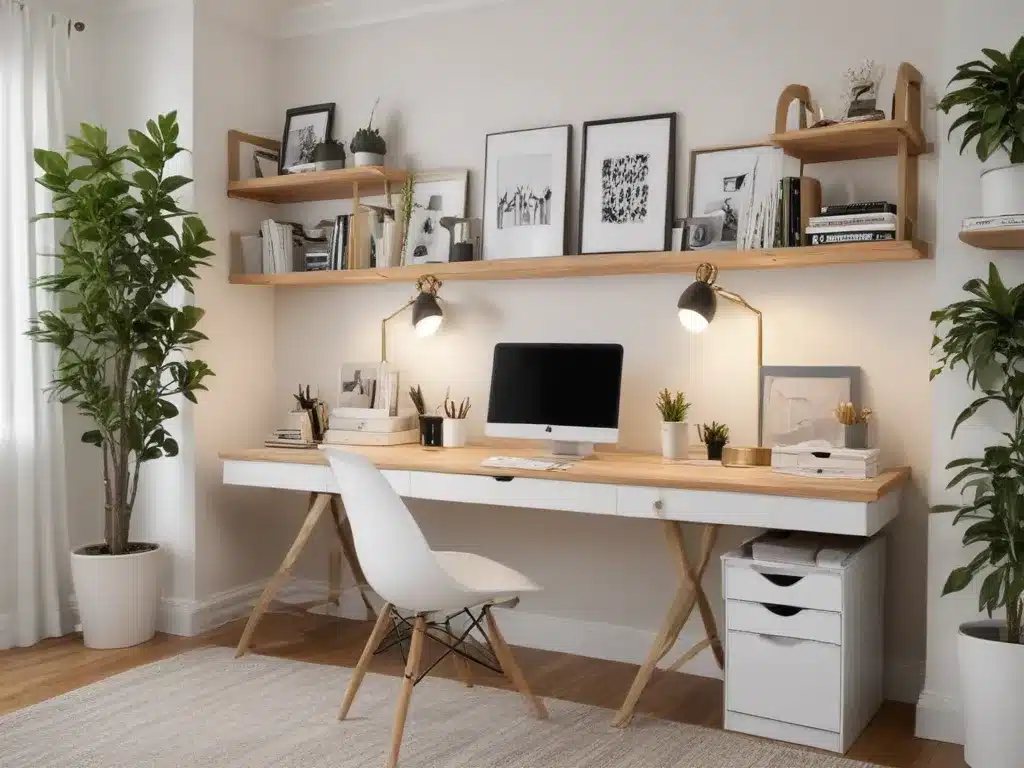
Introduction
As the world embraces remote work and the gig economy, the demand for stylish and functional home office designs has skyrocketed. Gone are the days when a makeshift corner in the living room sufficed as a workspace. Today, professionals and entrepreneurs alike seek dedicated spaces that foster productivity while complementing their personal aesthetic. In this comprehensive guide, I will explore the art of creating simple yet stylish home office designs that maximize productivity and inspire creativity.
Choosing the Right Location
The first step in designing a productive home office is selecting the perfect location. I recommend dedicating a separate room or area solely for work purposes. This separation helps establish boundaries and minimizes distractions. When choosing the room, consider factors such as natural light, noise levels, and proximity to high-traffic areas. Adequate natural light can enhance mood and productivity, while a quieter location can promote better concentration.
Optimizing Space and Layout
Efficient space utilization is key to creating a functional home office. I suggest measuring the available area and planning the layout accordingly. A well-organized layout can streamline workflow and create a sense of order. Consider incorporating modular or multi-purpose furniture to maximize space, such as a desk that doubles as a storage unit or a wall-mounted fold-down desk for tight spaces.
Ergonomic Considerations
Comfort and ergonomics play a crucial role in maintaining productivity throughout the workday. I recommend investing in an ergonomic chair that supports proper posture and minimizes strain on the back and shoulders. Adjust the desk height to ensure a comfortable typing position, and consider incorporating a standing desk or converter for added flexibility.
Lighting and Color Palette
Lighting and color choices can significantly influence mood and productivity. I suggest incorporating a combination of ambient and task lighting to create a well-illuminated workspace. Natural light, when available, should be maximized through strategic window placement or the use of light-filtering window treatments. When it comes to color, opt for soothing tones that promote focus and a sense of calm, such as soft blues, greens, or neutral shades.
Storage and Organization
Effective storage and organization are essential for maintaining a clutter-free and productive workspace. I recommend incorporating ample shelving, cabinets, and drawer units to keep supplies, documents, and equipment neatly organized. Consider investing in a filing system or digital document management to streamline paperwork and reduce visual clutter.
Personal Touches and Inspiration
While productivity is the primary goal, adding personal touches can create a warm and inspiring environment. I encourage incorporating artwork, plants, or meaningful objects that spark joy and creativity. These personal touches can help alleviate stress and foster a positive mindset during long work sessions.
Technology Integration
In today’s digital age, seamless technology integration is crucial for a productive home office. I suggest investing in a reliable high-speed internet connection, a comfortable and responsive input device (such as a keyboard and mouse), and a high-quality monitor or dual-monitor setup for increased screen real estate. Consider incorporating smart home technology for added convenience, such as voice-controlled lighting or temperature controls.
Noise Management and Privacy
Effective noise management and privacy considerations are essential for maintaining focus and minimizing distractions. I recommend utilizing sound-absorbing materials, such as curtains, rugs, or acoustic panels, to reduce external noise pollution. If noise levels are particularly high, consider investing in noise-canceling headphones or a white noise machine.
Versatility and Flexibility
As work dynamics evolve, a versatile and flexible home office design can adapt to changing needs. I suggest incorporating modular or reconfigurable furniture that can easily adjust to accommodate different tasks or team collaborations. This flexibility allows the space to grow and evolve alongside your professional journey.
Sustainability and Energy Efficiency
In today’s environmentally conscious world, incorporating sustainable and energy-efficient elements into your home office design can not only benefit the planet but also reduce operational costs. I recommend exploring eco-friendly materials, energy-efficient lighting and appliances, and implementing practices such as paperless document management and recycling programs.
Conclusion
Designing a simple yet stylish home office that maximizes productivity requires careful consideration of various factors, including space optimization, ergonomics, lighting, organization, and personal touches. By following the guidelines outlined in this comprehensive guide, you can create a workspace that not only promotes productivity but also reflects your personal style and fosters a positive work-life balance. Remember, the key is to strike a balance between functionality and aesthetics, creating an environment that inspires and motivates you to achieve your professional goals.

















